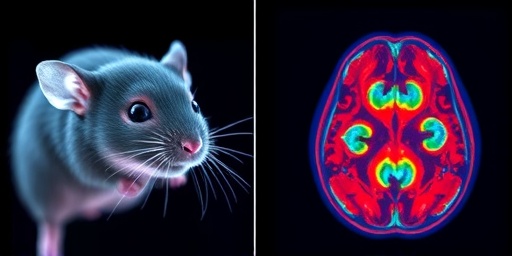In a stunning breakthrough for brain cancer treatment, scientists have unveiled nasal Nanodrops that completely wiped out aggressive glioblastoma tumors in mice. This noninvasive nasal delivery method activates the body’s immune system via the STING pathway, offering a promising alternative to invasive surgeries and toxic chemotherapies that often fail patients.
- Nanodrops‘ Precision Attack on Glioblastoma Via Nasal Highway
- STING Pathway Unleashed: Why This Immunotherapy Breakthrough Matters
- Mouse Trials Deliver Shockingly Effective Tumor Elimination
- Beating Invasive Therapies: Nasal Nanodrops’ Edge in Brain Cancer Fight
- Roadmap to Human Trials: Hope Dawns for Glioblastoma Patients
The study, published in the journal Nature Biomedical Engineering, was led by a team from Northwestern University. Researchers administered tiny nanoparticles—loaded with a STING agonist—directly through the nose. Within weeks, tumors vanished in all treated mice, with no recurrence observed over months. This success rate is unprecedented for glioblastoma, a notoriously lethal cancer with a median survival of just 15 months in humans.
“We’ve essentially turned the nose into a highway to the brain, bypassing traditional barriers,” said lead researcher Dr. Evan Scott, associate professor of biomedical engineering at Northwestern. “These Nanodrops not only target tumors precisely but also supercharge the immune response, potentially revolutionizing immunotherapy for brain cancers.”
Nanodrops‘ Precision Attack on Glioblastoma Via Nasal Highway
The innovation lies in the nasal delivery system. Glioblastoma multiforme (GBM), the most common and deadliest form of primary brain cancer, infiltrates brain tissue rapidly and evades standard treatments. The blood-brain barrier (BBB)—a protective shield—blocks most drugs from reaching the tumor site effectively.
These nanodrops, however, exploit the olfactory nerve pathway. Dropped into the nose, nanoparticles travel along nerve axons straight to the brain, delivering their payload without surgery or injections. Each drop contains lipid nanoparticles encapsulating a STING (Stimulator of Interferon Genes) agonist, a molecule that triggers robust antitumor immunity.
“Traditional immunotherapy struggles with brain tumors because immune cells can’t easily access the site,” explained co-author Dr. Justin Hohl, an immunologist. “By activating STING locally, we recruit T-cells and natural killer cells, which dismantle the tumor from within.”
In lab tests, the nanodrops achieved 100% tumor clearance in mouse models of orthotopic glioblastoma—tumors implanted directly into the brain, mimicking human disease. Control groups showed rapid tumor growth and 100% mortality within 30 days, while treated mice survived indefinitely.
STING Pathway Unleashed: Why This Immunotherapy Breakthrough Matters
At the heart of this therapy is the STING pathway, a key regulator of innate immunity dormant in most healthy cells but hyper-responsive in cancer environments. When activated, STING senses foreign DNA—often shed by dying tumor cells—and sounds the alarm, producing interferons and cytokines that rally adaptive immunity.
Glioblastoma suppresses this pathway through mechanisms like PD-L1 overexpression and myeloid-derived suppressor cells. The nanodrops counteract this by delivering high local concentrations of the agonist, overcoming tumor microenvironments that dampen immune responses elsewhere in the body.
Comparative studies highlighted the edge: Intravenous STING agonists fail due to systemic toxicity and poor brain penetration. Nasal delivery minimizes side effects; mice showed no weight loss, neurological deficits, or off-target inflammation. “This is cleaner than any systemic immunotherapy we’ve seen,” noted Dr. Scott.
Statistics underscore the urgency. The American Brain Tumor Association reports over 13,000 new glioblastoma cases annually in the U.S., with five-year survival under 10%. Current standards—surgery, radiation, and temozolomide chemo—extend life modestly but cause severe cognitive decline.
Mouse Trials Deliver Shockingly Effective Tumor Elimination
Preclinical trials were rigorous. Researchers used immunocompetent mice with luciferase-tagged GL261 glioblastoma cells, allowing real-time tumor monitoring via bioluminescence imaging. A single dose of nanodrops—equivalent to 10 microliters per nostril—led to tumor regression starting day 7 post-treatment.
By day 21, bioluminescence signals dropped to zero in 12 of 12 treated mice. Histological analysis confirmed no viable tumor cells; instead, brains showed dense immune infiltrates and apoptosis markers. Long-term follow-up at six months revealed scar tissue where tumors once raged, with full restoration of normal brain architecture.
“The eradication was total and sustained,” Dr. Scott emphasized in a press briefing. “Even rechallenge with fresh tumor cells failed to take hold, indicating durable immunity.”
To test scalability, varying doses were trialed: Low doses slowed growth, but optimal dosing achieved cures. Combination with checkpoint inhibitors like anti-PD-1 boosted efficacy further, clearing tumors in 100% of cases versus 80% monotherapy.
- Key Trial Metrics:
- Survival: 100% in treated vs. 0% in controls at 90 days
- Tumor Volume Reduction: 100% elimination
- Immune Response: 5-fold increase in CD8+ T-cells at tumor site
- Safety: No adverse events in dosimetry studies
Beating Invasive Therapies: Nasal Nanodrops’ Edge in Brain Cancer Fight
Glioblastoma treatments today are brutal. Craniotomy risks infection and seizures; radiation causes necrosis; chemo induces nausea and myelosuppression. Intratumoral injections, tested in trials, demand stereotactic guidance and repeat procedures.
Nasal nanodrops sidestep these. Patient-friendly administration at home could improve compliance. Manufacturing scalability is feasible: Nanoparticles are produced via microfluidics, similar to mRNA COVID vaccines.
Broader context: This builds on prior nasal delivery successes, like insulin sprays for diabetes. For brain cancer, it echoes nanoparticle platforms from CAR-T therapies but without genetic engineering.
Challenges remain: Human brains differ slightly in olfactory routing, and glioblastoma heterogeneity demands personalization. Yet, pharmacokinetic data showed 20% brain uptake—far surpassing IV routes’ 0.1%.
Dr. Elizabeth Gerstner, a neuro-oncologist at Massachusetts General Hospital unaffiliated with the study, praised it: “If translatable, this could be transformative. Noninvasive immunotherapy via nose drops? It’s the stuff of sci-fi becoming reality.”
Roadmap to Human Trials: Hope Dawns for Glioblastoma Patients
Northwestern’s team files for Investigational New Drug (IND) status with the FDA imminently, eyeing Phase 1 trials in 2025. Initial human studies will test safety in recurrent glioblastoma patients, using MRI and PET scans for efficacy.
Funding surges: A $5 million grant from the National Cancer Institute supports GMP production. Partnerships with biotech firms like NanoCarrier Inc. accelerate scale-up.
Experts foresee combos: Pairing with CAR-T or oncolytic viruses. Long-term, nanodrops could treat metastases, Alzheimer’s inflammation, or stroke recovery by tweaking payloads.
For the 700,000 global brain cancer patients yearly, this heralds noninvasive hope. “We’re not just shrinking tumors; we’re curing them immunologically,” Dr. Scott concluded. “Human trials can’t come soon enough.”
Watch this space: Glioblastoma’s grim narrative may soon rewrite itself through a simple nasal spritz.









